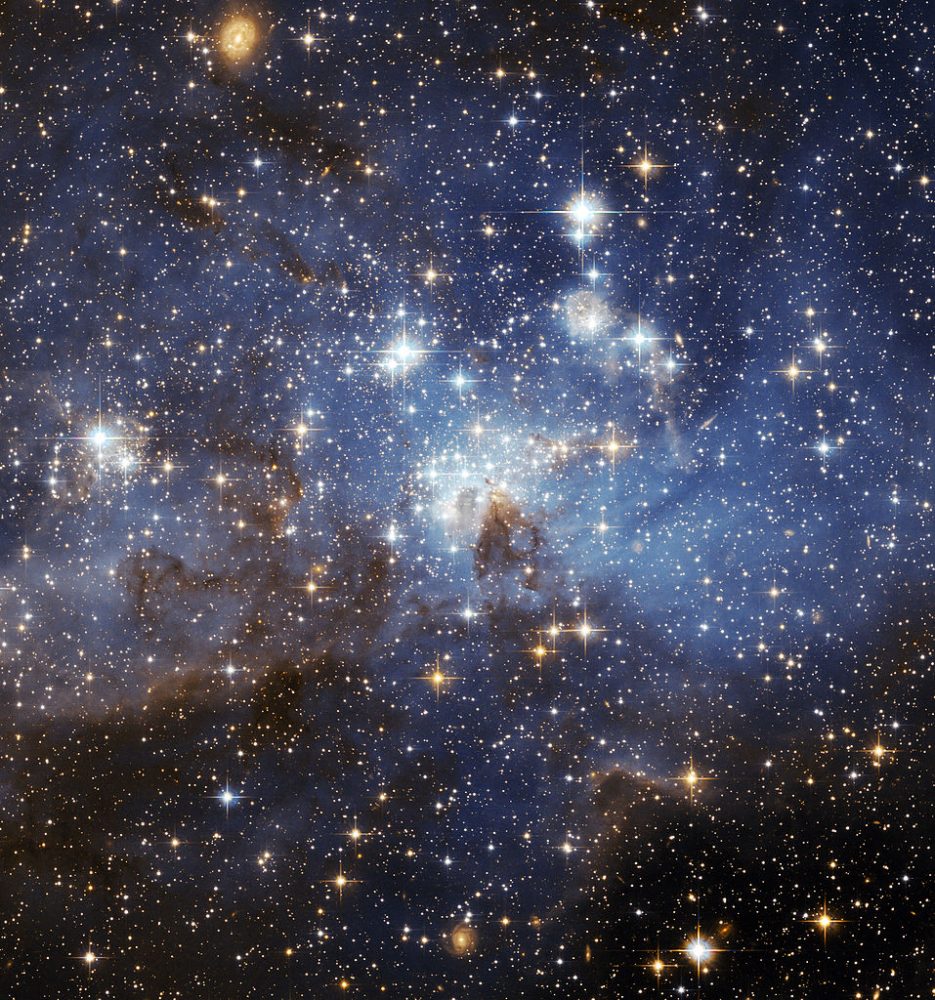LH 95 stellar nursery in the Large Magellanic cloud.
Photo: NASA, ESA, and the Hubble Heritage Team
Photo: NASA, ESA, and the Hubble Heritage Team
The Cocoon Nebula. Photo:
Julie and Jessica Garcia/Adam Block/NOAO/AURA/NSF
Julie and Jessica Garcia/Adam Block/NOAO/AURA/NSF
A not very massive cluster may contain only one really massive bright star, or none at all. The Cocoon Nebula is an example of a cluster that appears to contain only one massive star, the one in the center of the nebula. This star is probably an O-type star, and it is massive and hot enough to ionize the entire nebula on its own. Some of the fainter, lower-mass stars members of the newborn cluster can be seen near the massive central star. There are likely many more low-mass stars in the nebula that are far too faint to show up in this image.
Some clusters do not contain any O-type stars at all, and not a single really bright B-type star, either. These are really low-mass clusters. A perfect example is the very NGC 6726/NGC 6727 complex in Corona Australis. This brilliant annotated image by Don Goldman shows a few apparently bright blue stars, which are probably not much more massive than Vega. They are quite incapable of ionizing an emission nebula. Next to them, some really small and light-weight stars can be seen being born.
It is clear that the more massive a cluster it, the more massive its most massive member is going to be. If a cluster is too light-weight, its chances of producing even one really massive stars are small. And any cluster will produce many more low-mass than high-mass stars. This is what the Initial Mass Function of a cluster is about.
But while I understand the general concept of the Initial Mass Function (IMF), I just can't get the specifics.
I can't wrap my head around so much math, I'm sorry! Can anyone help me? According to Wikipedia, the mass of an O-type main sequence star may vary between 15 and 90 solar masses. Can anyone tell me how massive a cluster should be in order to have a good chance of producing one 15 solar mass star? How massive should it be to produce a 30 solar mass star? A 50 solar mass star? A 70 solar mass star? A 90 solar mass star?Wikipedia wrote:
Chabrier 2003 for individual stars:
\xi (m) \Delta m= 0.158 (1/m) \exp[- (\log(m)-\log(0.08))^2/(2 \times 0.69^2)] for m < 1,
\xi(m) = k m^{-\alpha} for m > 1, \alpha = 2.3 \pm 0.3
Chabrier 2003 for stellar systems:
\xi (m) \Delta m= 0.086 (1/m) \exp[- (\log(m)-\log(0.22))^2/(2 \times 0.57^2)] for m < 1,
\xi(m) = k m^{-\alpha} for m > 1, \alpha = 2.3 \pm 0.3
Your help would be much appreciated!
Ann

